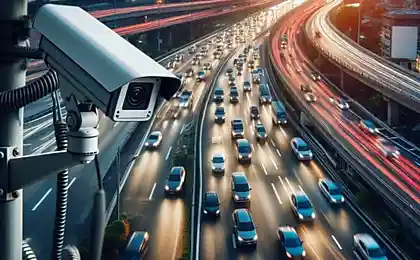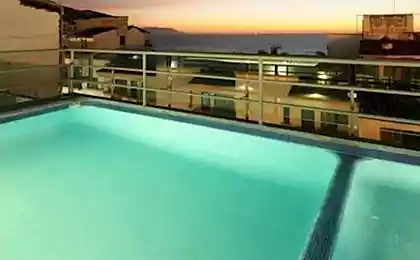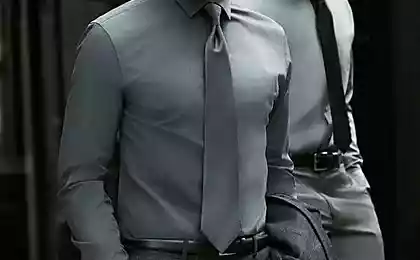786
Riddle observer. Where reality begins?
Nobody in the world does not understand quantum mechanics - the main thing that you need to know about it. Yes, many physicists have learned to use its laws, and even predict the phenomenon of quantum calculations. But so far it is not clear why the presence of the observer determines the fate of the system and causes it to make a choice in favor of one state. We selected examples of experiments, the outcome of which will inevitably affect the observer and tried to figure out that quantum mechanics is going to do with the intervention of consciousness in the material reality.
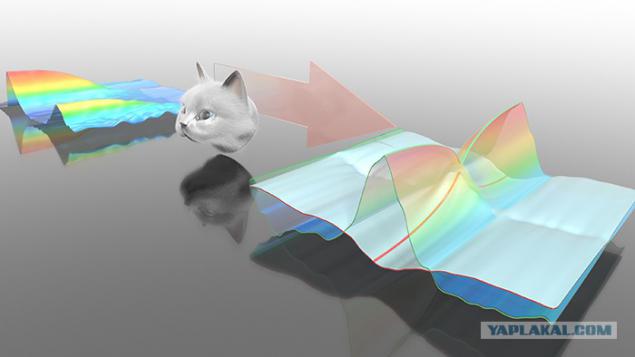
Schrödinger's cat
Today there are many interpretations of quantum mechanics, the most popular among them is Copenhagen. Its main provisions in 1920 formulated by Niels Bohr and Werner Heisenberg. A central term of the Copenhagen interpretation was the wave function - a mathematical function contain information about all the possible states of a quantum system in which it resides at the same time.
According to the Copenhagen interpretation, it is for certain to determine the state of the system, distinguishing it from the others can only observe (the wave function only helps to mathematically calculate the probability of finding the system in a given state). We can say that after seeing the quantum system becomes a classic: immediately cease to co-exist in many states at once in favor of one of them.
This approach has always been the enemy (remember even "God does not play dice" Albert Einstein), but the accuracy of calculations and predictions prevailed. However, in recent years the supporters of the Copenhagen interpretation is becoming less and not the least reason for that - the most mysterious instant collapse of the wave function in the measurement. The famous thought experiment by Erwin Schrödinger-cat poor guy was just intended to show the absurdity of this phenomenon.
So, remember the content of the experiment. The black box is placed a living cat, a vial of poison and a mechanism that can be at random to put the poison into action. For example, a radioactive atom, the decay of which is broken ampoule. The exact time of the collapse of the atom is not known. There is only a half-life: time during which the decay occurs with a probability of 50%.
It turns out that for an external observer, the cat inside the box exists in two states: either he's alive, if all goes well or dead, if the breakdown occurred and the ampoule broken. Both of these states are described by the wave function of a cat, which varies over time: the farther away, the more likely that radioactive decay has occurred. But as soon as the box is opened, the wave function collapses, and we immediately see the outcome of the experiment zhivoderskogo.
It turns out that while the observer will not open the drawer, the cat and will always balancing on the border between life and death, and it will determine the fate of the only action of the observer. That is absurd, at which point the Schroedinger. Electron diffraction
According to the poll the greatest physicists conducted by the newspaper The New York Times, the experience with the diffraction of electrons, delivered in 1961, Claus Jensen, the become one of the most beautiful in the history of science. What is its essence?
There's a source that emits a stream of electrons toward the screen, photographic plate. And there is a barrier to these electrons - a copper plate with two slits. What a picture on the screen, you can expect if the electrons represent a small charged sphere? Two illuminated strips opposite the slots.
In fact, the screen displays a much more complex pattern of alternating black and white stripes. The fact that the passage of electrons through the slits start to behave not as particles but as a wave (just like the photons of light particles can be simultaneously and waves). Then these waves interact in space, somewhere relaxing, but somewhere reinforce each other, and the result appears on the screen complex pattern of alternating light and dark bands.
In this experiment, the result does not change, and if you let the electrons through the gap is not a continuous stream, and one by one, even one particle can be both a wave. Even one electron at a time can pass through two slits (and this is one of the important provisions of the Copenhagen interpretation of quantum mechanics - the objects can be simultaneously and their "habitual" physical properties and exotic wave).
But what is the observer? With that to him already complicated story became even more difficult. When similar experiments physicists have tried to fix with the help of instruments through which slit the electron passes in reality, the picture on the screen changed dramatically and became a "classic": two illuminated area opposite the slots and no alternating bands.
Electrons do not want to be like their wave nature, under the watchful eye of the observer. Adjust to his instinctive desire to see a simple and clear picture. Mystic? There is a much more simple explanation: there is no monitoring of the system can not be accomplished without a physical impact on it. But let us return to this later.

Heated fullerene
Experiments on diffraction particle placed not only on the electrons, but on a much larger objects. For example, fullerenes - large, closed molecules made up of tens of carbon atoms (for example, the fullerene of sixty carbon atoms in the form very similar to football: a hollow sphere, made of pentagons and hexagons).
Recently, a group from the University of Vienna led by Prof. Zeilinger tried to introduce an element of observation in such experiments. For this, they irradiated fullerene molecule moving laser beam. When heated by an external action, the molecules begin to glow and thus inevitably found their place an observer in space.
Together with innovation and changed the behavior of molecules. Prior to the surveillance fullerenes quite successfully skirted the obstacle (exhibit wave properties) like electrons from the previous example, passing through the opaque screen. But later, with the advent of the observer, fullerenes calmed down and began to behave like a particle of matter is quite law-abiding.

Cooling measurement
One of the known laws of the quantum world is the Heisenberg uncertainty principle: it is impossible to simultaneously determine the position and velocity of a quantum object. The more accurately measure the momentum of a particle, the less accurately you can measure its position. But the laws of quantum effects operating at the level of tiny particles, usually unnoticed in our macroscopic world's biggest.
Because the more valuable recent experiments the group of Professor Schwab from the United States, in which quantum effects are not shown the same level of electrons or fullerene molecules (their characteristic diameter - about 1 nm), and a little more tangible object - a tiny strip of aluminum.
This strip fastened on both sides so that it was in the middle of limbo and could vibrate under external influence. In addition, close to the strip is a device able to accurately detect its position.
As a result, the experimenters found two interesting effects. Firstly, any measurement of the position of the object, the observation of the strip is not held for her in vain - after each measurement position of the strip changed. Roughly speaking, the experimenters determined with great precision the coordinates of the strip and thus the principle of Heisenberg, changed its velocity, and thus the subsequent position.
Secondly, it has quite unexpectedly, some measure also leads to cooling of the strip. It turns out, the observer can only by their presence to change the physical characteristics of objects. It sounds quite incredible, but to honor the physicists say that they are not confused - now the group of Professor Schwab thinks, how to apply the observed effect for cooling electronic circuits.
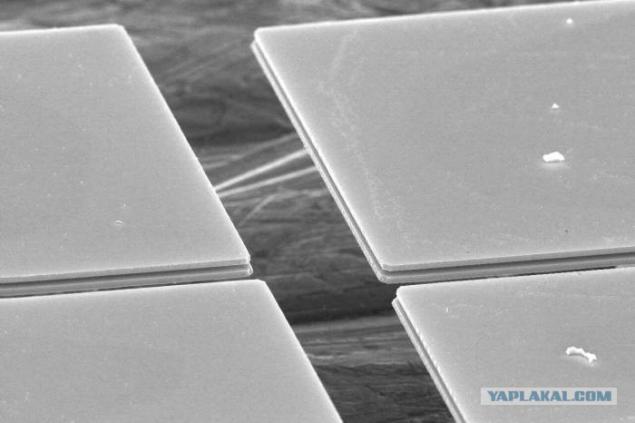
Freezes particles
As is known, unstable radioactive particles disintegrate in the world not only for experiments on the cats, but also quite themselves. Thus, each particle has an average lifetime, which, it turns out, may be extended under the watchful eye of the observer.
For the first time this quantum effect predicted back in the 1960s, and his brilliant experimental confirmation came in an article published in 2006 by a group of Nobel Prize-winning physicist Wolfgang Ketterle of the Massachusetts Institute of Technology.
In this paper we studied the decay of unstable excited rubidium atoms (rubidium atoms decay into the ground state and photons). Immediately after the preparation of the system, the excitation of atoms began to watch them - they shine a laser beam. This observation was in two modes: continuous (constantly served in small light pulses) and pulse (the system from time to time exposed to pulses more powerful).
The results are perfectly in line with the theoretical predictions. Exterior lighting effects really slow decay of particles, how would return them to their original, far from the collapse of the state. The magnitude of the effect is studied for two modes also coincides with the predictions. A maximum life unstable excited rubidium atoms managed to extend 30 times.
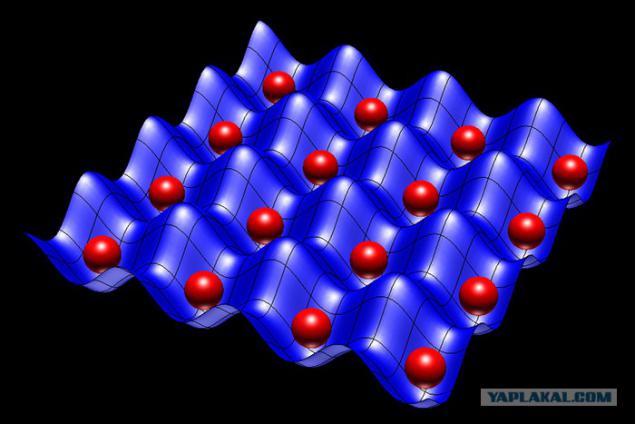
Quantum mechanics and consciousness
Electrons and fullerenes cease to exercise their wave properties, the aluminum plates are cooled and unstable particles freeze in its decay: the all-powerful under the gaze of the observer the world is changing. Is not the testimony of involvement in the operation of our minds around the world? So maybe they were right Carl Jung and Wolfgang Pauli (avstriycky physicist and Nobel laureate, one of the pioneers of quantum mechanics), when they said that the laws of physics and consciousness should be considered complementary?
But it is only one step to the recognition of duty: the world around are illusory product of our mind. Scary? ("Do you really think that the moon exists only when you look at her?" - Commented on the principles of quantum mechanics, Einstein). Then try to revert to the physicists. Especially in recent years, they have less and less favor the Copenhagen interpretation of quantum mechanics with its mysterious collapse of the wave function, which comes to replace the other, it is down to earth and reliable term - decoherence.
Here's the thing - in all these experiments the experimenters with the observation inevitably affected the system. It illuminates the laser measuring devices installed. This is a common, very important principle: you can not observe the system, measure its properties do not interact with it. Where the interaction, there is change in the properties. Especially when a tiny quantum system of interacting quantum objects colossus. So timeless, neutral observer can not be a Buddhist.
This is exactly what explains the term "decoherence" - in terms of the irreversible thermodynamics process violations quantum properties of the system in its interaction with other, larger system. During this interaction a quantum system loses its original features and is becoming a classic, "subject to" major system. This explains the paradox of Schrödinger's cat: the cat is such a large system, that it simply can not be isolated from the world. The very formulation of the thought experiment is not quite correct.
In any case, compared to the reality of creation as an act of consciousness, decoherence sounds much more relaxed. Even, maybe too quiet. After all, with this approach the entire classical world becomes one big effect of decoherence. And as the authors of one of the most important books in this field, such approach also logically follow statements such as "the world there are no particles" or "there is no time for a fundamental level».
Creating an observer or omnipotent decoherence? We have to choose between two evils. But remember - now scientists are increasingly convinced that at the heart of our thought processes are those most notorious quantum effects. So where monitoring ends and reality begins - have to choose each one of us.
taken from
theoryandpractice.ru/posts/8507-quantum-experiment
Source:

Schrödinger's cat
Today there are many interpretations of quantum mechanics, the most popular among them is Copenhagen. Its main provisions in 1920 formulated by Niels Bohr and Werner Heisenberg. A central term of the Copenhagen interpretation was the wave function - a mathematical function contain information about all the possible states of a quantum system in which it resides at the same time.
According to the Copenhagen interpretation, it is for certain to determine the state of the system, distinguishing it from the others can only observe (the wave function only helps to mathematically calculate the probability of finding the system in a given state). We can say that after seeing the quantum system becomes a classic: immediately cease to co-exist in many states at once in favor of one of them.
This approach has always been the enemy (remember even "God does not play dice" Albert Einstein), but the accuracy of calculations and predictions prevailed. However, in recent years the supporters of the Copenhagen interpretation is becoming less and not the least reason for that - the most mysterious instant collapse of the wave function in the measurement. The famous thought experiment by Erwin Schrödinger-cat poor guy was just intended to show the absurdity of this phenomenon.
So, remember the content of the experiment. The black box is placed a living cat, a vial of poison and a mechanism that can be at random to put the poison into action. For example, a radioactive atom, the decay of which is broken ampoule. The exact time of the collapse of the atom is not known. There is only a half-life: time during which the decay occurs with a probability of 50%.
It turns out that for an external observer, the cat inside the box exists in two states: either he's alive, if all goes well or dead, if the breakdown occurred and the ampoule broken. Both of these states are described by the wave function of a cat, which varies over time: the farther away, the more likely that radioactive decay has occurred. But as soon as the box is opened, the wave function collapses, and we immediately see the outcome of the experiment zhivoderskogo.
It turns out that while the observer will not open the drawer, the cat and will always balancing on the border between life and death, and it will determine the fate of the only action of the observer. That is absurd, at which point the Schroedinger. Electron diffraction
According to the poll the greatest physicists conducted by the newspaper The New York Times, the experience with the diffraction of electrons, delivered in 1961, Claus Jensen, the become one of the most beautiful in the history of science. What is its essence?
There's a source that emits a stream of electrons toward the screen, photographic plate. And there is a barrier to these electrons - a copper plate with two slits. What a picture on the screen, you can expect if the electrons represent a small charged sphere? Two illuminated strips opposite the slots.
In fact, the screen displays a much more complex pattern of alternating black and white stripes. The fact that the passage of electrons through the slits start to behave not as particles but as a wave (just like the photons of light particles can be simultaneously and waves). Then these waves interact in space, somewhere relaxing, but somewhere reinforce each other, and the result appears on the screen complex pattern of alternating light and dark bands.
In this experiment, the result does not change, and if you let the electrons through the gap is not a continuous stream, and one by one, even one particle can be both a wave. Even one electron at a time can pass through two slits (and this is one of the important provisions of the Copenhagen interpretation of quantum mechanics - the objects can be simultaneously and their "habitual" physical properties and exotic wave).
But what is the observer? With that to him already complicated story became even more difficult. When similar experiments physicists have tried to fix with the help of instruments through which slit the electron passes in reality, the picture on the screen changed dramatically and became a "classic": two illuminated area opposite the slots and no alternating bands.
Electrons do not want to be like their wave nature, under the watchful eye of the observer. Adjust to his instinctive desire to see a simple and clear picture. Mystic? There is a much more simple explanation: there is no monitoring of the system can not be accomplished without a physical impact on it. But let us return to this later.

Heated fullerene
Experiments on diffraction particle placed not only on the electrons, but on a much larger objects. For example, fullerenes - large, closed molecules made up of tens of carbon atoms (for example, the fullerene of sixty carbon atoms in the form very similar to football: a hollow sphere, made of pentagons and hexagons).
Recently, a group from the University of Vienna led by Prof. Zeilinger tried to introduce an element of observation in such experiments. For this, they irradiated fullerene molecule moving laser beam. When heated by an external action, the molecules begin to glow and thus inevitably found their place an observer in space.
Together with innovation and changed the behavior of molecules. Prior to the surveillance fullerenes quite successfully skirted the obstacle (exhibit wave properties) like electrons from the previous example, passing through the opaque screen. But later, with the advent of the observer, fullerenes calmed down and began to behave like a particle of matter is quite law-abiding.

Cooling measurement
One of the known laws of the quantum world is the Heisenberg uncertainty principle: it is impossible to simultaneously determine the position and velocity of a quantum object. The more accurately measure the momentum of a particle, the less accurately you can measure its position. But the laws of quantum effects operating at the level of tiny particles, usually unnoticed in our macroscopic world's biggest.
Because the more valuable recent experiments the group of Professor Schwab from the United States, in which quantum effects are not shown the same level of electrons or fullerene molecules (their characteristic diameter - about 1 nm), and a little more tangible object - a tiny strip of aluminum.
This strip fastened on both sides so that it was in the middle of limbo and could vibrate under external influence. In addition, close to the strip is a device able to accurately detect its position.
As a result, the experimenters found two interesting effects. Firstly, any measurement of the position of the object, the observation of the strip is not held for her in vain - after each measurement position of the strip changed. Roughly speaking, the experimenters determined with great precision the coordinates of the strip and thus the principle of Heisenberg, changed its velocity, and thus the subsequent position.
Secondly, it has quite unexpectedly, some measure also leads to cooling of the strip. It turns out, the observer can only by their presence to change the physical characteristics of objects. It sounds quite incredible, but to honor the physicists say that they are not confused - now the group of Professor Schwab thinks, how to apply the observed effect for cooling electronic circuits.

Freezes particles
As is known, unstable radioactive particles disintegrate in the world not only for experiments on the cats, but also quite themselves. Thus, each particle has an average lifetime, which, it turns out, may be extended under the watchful eye of the observer.
For the first time this quantum effect predicted back in the 1960s, and his brilliant experimental confirmation came in an article published in 2006 by a group of Nobel Prize-winning physicist Wolfgang Ketterle of the Massachusetts Institute of Technology.
In this paper we studied the decay of unstable excited rubidium atoms (rubidium atoms decay into the ground state and photons). Immediately after the preparation of the system, the excitation of atoms began to watch them - they shine a laser beam. This observation was in two modes: continuous (constantly served in small light pulses) and pulse (the system from time to time exposed to pulses more powerful).
The results are perfectly in line with the theoretical predictions. Exterior lighting effects really slow decay of particles, how would return them to their original, far from the collapse of the state. The magnitude of the effect is studied for two modes also coincides with the predictions. A maximum life unstable excited rubidium atoms managed to extend 30 times.

Quantum mechanics and consciousness
Electrons and fullerenes cease to exercise their wave properties, the aluminum plates are cooled and unstable particles freeze in its decay: the all-powerful under the gaze of the observer the world is changing. Is not the testimony of involvement in the operation of our minds around the world? So maybe they were right Carl Jung and Wolfgang Pauli (avstriycky physicist and Nobel laureate, one of the pioneers of quantum mechanics), when they said that the laws of physics and consciousness should be considered complementary?
But it is only one step to the recognition of duty: the world around are illusory product of our mind. Scary? ("Do you really think that the moon exists only when you look at her?" - Commented on the principles of quantum mechanics, Einstein). Then try to revert to the physicists. Especially in recent years, they have less and less favor the Copenhagen interpretation of quantum mechanics with its mysterious collapse of the wave function, which comes to replace the other, it is down to earth and reliable term - decoherence.
Here's the thing - in all these experiments the experimenters with the observation inevitably affected the system. It illuminates the laser measuring devices installed. This is a common, very important principle: you can not observe the system, measure its properties do not interact with it. Where the interaction, there is change in the properties. Especially when a tiny quantum system of interacting quantum objects colossus. So timeless, neutral observer can not be a Buddhist.
This is exactly what explains the term "decoherence" - in terms of the irreversible thermodynamics process violations quantum properties of the system in its interaction with other, larger system. During this interaction a quantum system loses its original features and is becoming a classic, "subject to" major system. This explains the paradox of Schrödinger's cat: the cat is such a large system, that it simply can not be isolated from the world. The very formulation of the thought experiment is not quite correct.
In any case, compared to the reality of creation as an act of consciousness, decoherence sounds much more relaxed. Even, maybe too quiet. After all, with this approach the entire classical world becomes one big effect of decoherence. And as the authors of one of the most important books in this field, such approach also logically follow statements such as "the world there are no particles" or "there is no time for a fundamental level».
Creating an observer or omnipotent decoherence? We have to choose between two evils. But remember - now scientists are increasingly convinced that at the heart of our thought processes are those most notorious quantum effects. So where monitoring ends and reality begins - have to choose each one of us.
taken from
theoryandpractice.ru/posts/8507-quantum-experiment
Source:
